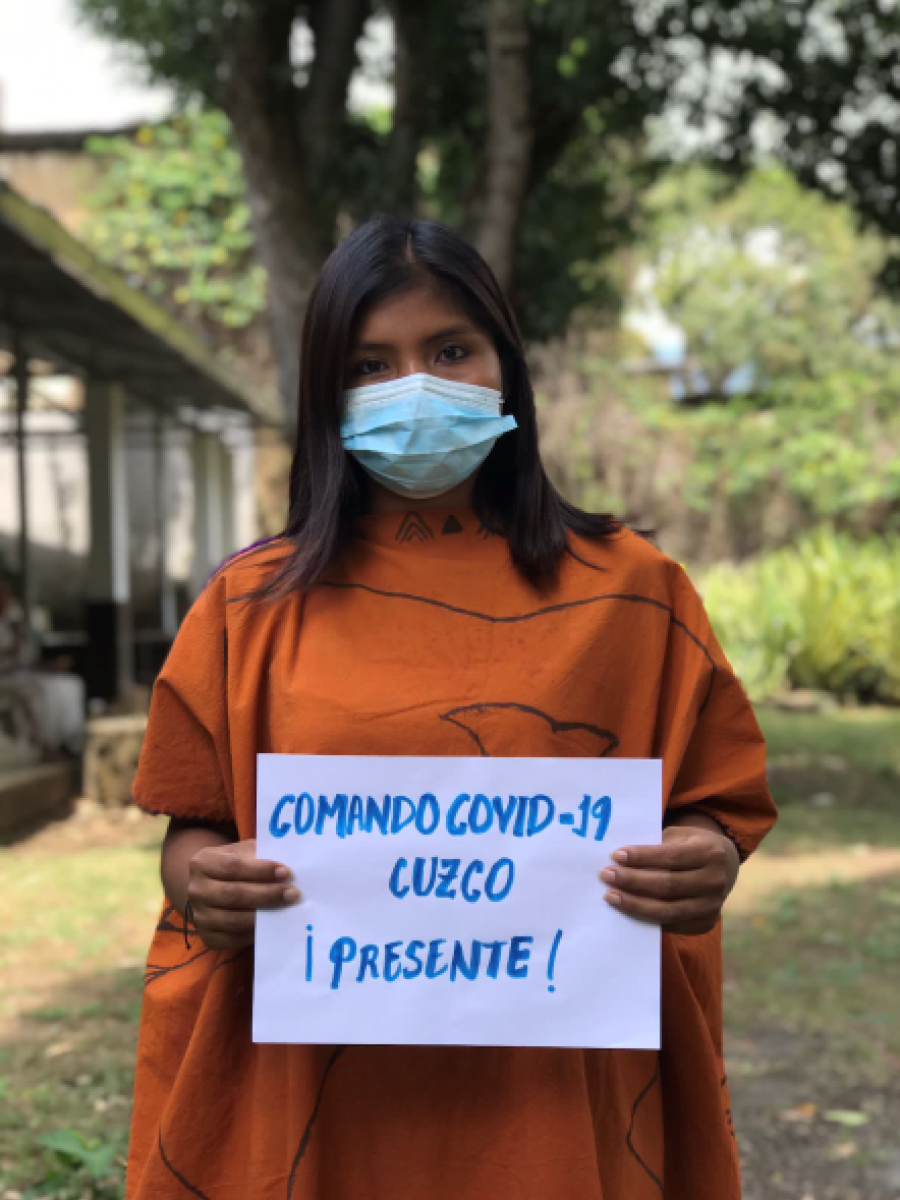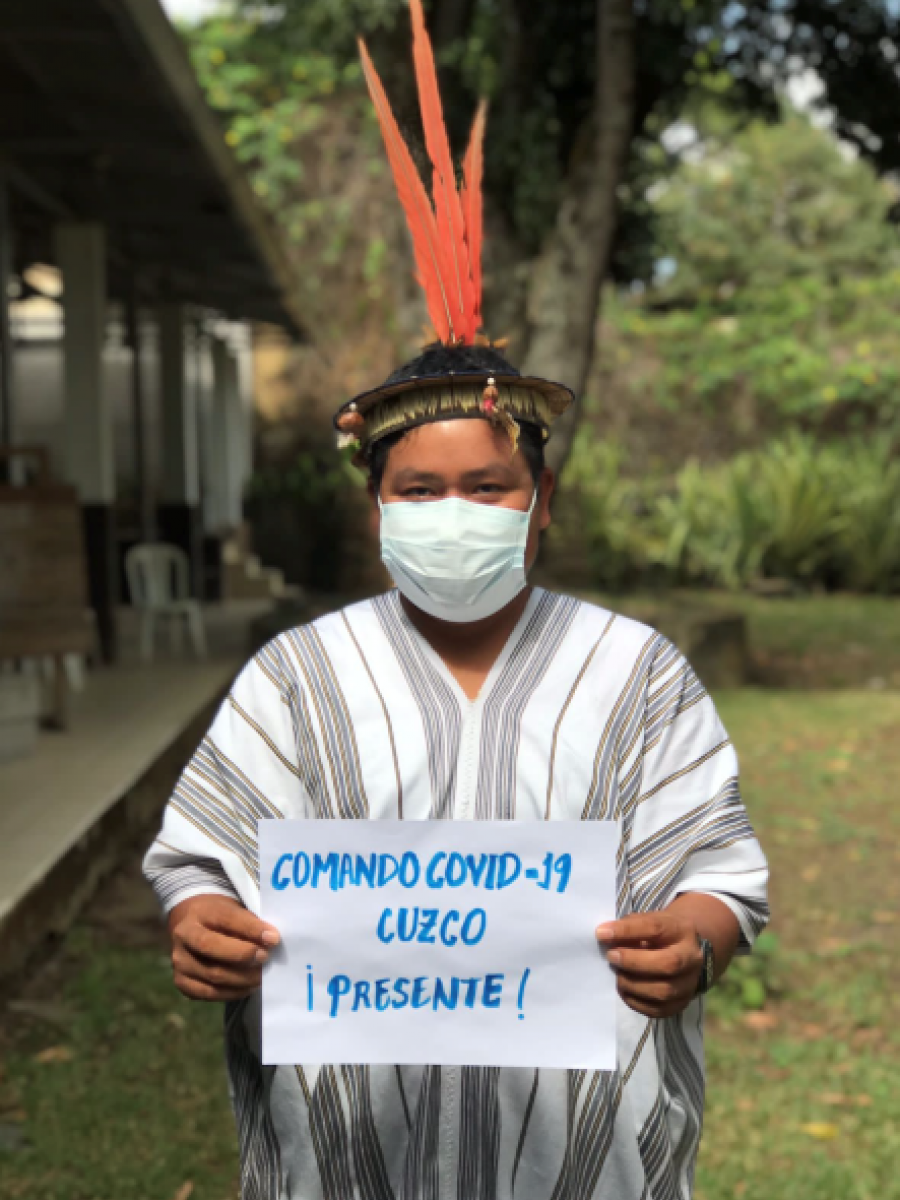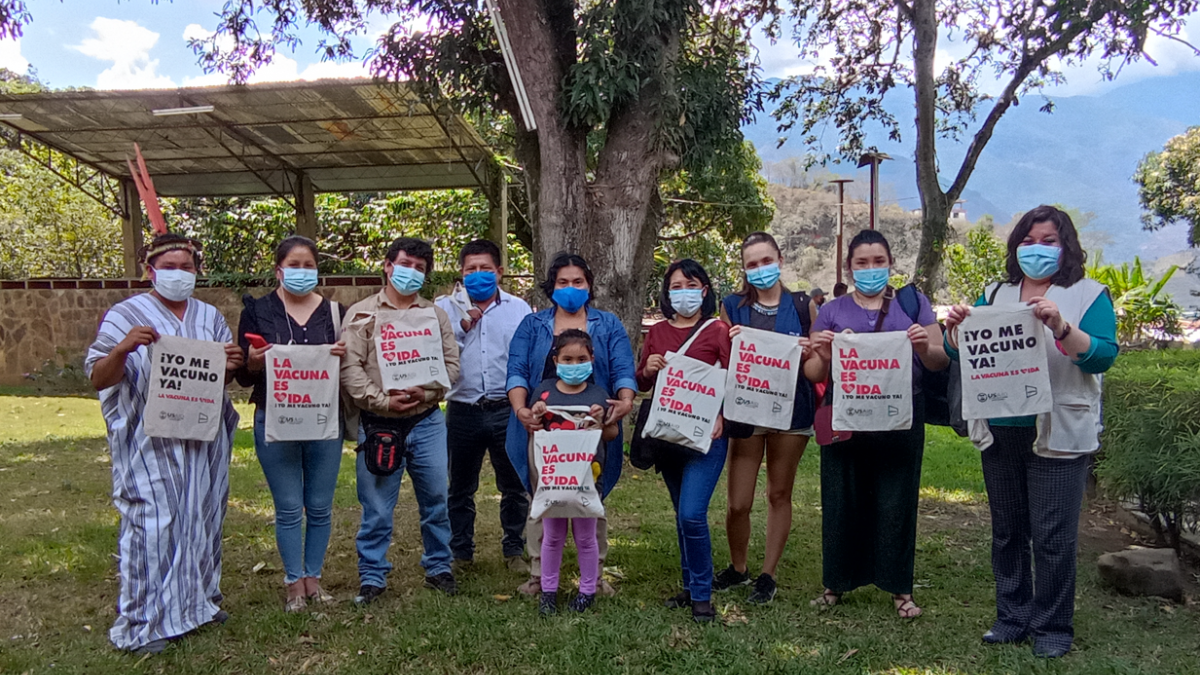An Indigenous Task Force to Fight Against COVID-19
Affirmation and respect of the local culture has accelerated the scale up of vaccination in the region
In 2020, Peru’s Indigenous community of Cusco closed its borders to protect its people from COVID-19, following the lead of countries around the globe.
But safety had its drawbacks.
In Cusco, border closure intensified the isolation that Indigenous communities were already experiencing pre-COVID-19. And it also undermined the strength of the Indigenous Task Force, an organization of regional and local Amazonian Indigenous governments, communities, and entities advocating for a more effective intercultural approach to the COVID-19 response.
The Indigenous Task Force did not have access to a formal space to meet virtually. On the one hand, the internet service in Indigenous communities is unstable. Moreover, the members of the task force are leaders of Amazonian ethnic groups for whom in-person presence is necessary to generate agreements, and virtuality breaks down social dynamics.
As a result, Indigenous leaders weren't able to effectively address the health crisis caused by COVID-19, and vaccination coverage in their communities was very low.
Indigenous communities did not have full access to information about vaccines and their role in saving lives, in addition to mistrust among community members about modern health practices. Add to that the lack of facilities to access vaccination centers. This immunization gap was a problem that needed to be tackled.


Starting in March 2021, the USAID and Prisma NGO COVID-19 Vaccination Support Project in Peru took on the challenge of reactivating the COVID-19 Indigenous Task Force, with the aim of increasing vaccination coverage in Amazonian Indigenous communities. As a first step in Cusco, USAID gathered community leaders, NGOs, local governments, and private companies, such as Pluspetrol, to collaborate with the Cusco Regional Health Department and Indigenous community organizations in health interventions.
Space for dialogue and coordination reopened, making it possible to listen to proposals from Indigenous organizations with the seriousness they deserved, respecting their cultural identity and traditional health practices, and opening the possibility of complementing these practices with modern medicine.
USAID convened leaders of the main Amazonian organizations for a two-day face-to-face event in the city of Quillabamba, Cusco, with the objective of learning their perceptions about the COVID-19 vaccine and infection prevention and control measures carried out in their communities. That way, health personnel could take these into account when starting the vaccination process.
Participation from leaders of Cusco’s Lower Urubamba Management Committee made it possible to have a much greater receptivity in each community. This committee is made up of the leaders of the Amazonian communities and represents these communities, as well as the settlers who live in their territory. It also promotes respect for the native culture and its environment, the defense and claim of land and natural resources, strengthening the cultural identity of the community, and participation in the national, regional, and local political space. The committee regained importance during the COVID-19 pandemic due to the health intervention actions it participated in throughout the region.
In the Amazonian Indigenous Task Force, an action plan was developed that includes communication in the native languages of each area. Upon arriving in the lower Urubamba, we established a space for dialogue and continue to strengthen it to listen to the needs of the Amazonian Indigenous Peoples continuously and directly.”
Deysi Moscoso, Cusco territorial coordinator.
Amazonian Indigenous community that participated in the dialogues with the Indigenous Task Force and in the COVID19 vaccination process.
As a result, health workers began to move into communities instead of waiting for the Indigenous population to approach health facilities. The brigades of health personnel moved in peque peque, a small wooden lake boat, and pongueros, a metal lake boat, for 15 days, and some brigades had to travel 21 hours by boat to reach the communities with the lowest coverage.
Health personnel moved through the river basin, since it is the only method of transportation in the area. In this way, the COVID-19 vaccines arrived in a more equitable and timely manner to communities. USAID and Prisma supported the logistic process of the vaccination from start to end, to ensure the correct storage of the vaccines and safe administration of them to the people in these remote communities.

Vaccination rates started going up
In the communities of the province of Convention, where the Indigenous Task Force supported the government’s vaccination campaign, the number of people receiving both doses of the COVID-19 vaccine more than doubled, going from 29% to 62% in people older than 12. In Megantoni, one of the communities where the Indigenous Command intervened, COVID-19 cases dropped from 782 to 290.
“From the beginning we have welcomed the initiative of [implementing partner] Prisma and USAID because they supported us in carrying out this intervention and gave us the logistical support that was required. The project has had a lot of influence in the lower Urubamba. They had the initiative to articulate with other entities, and most importantly reactivated the Task Force, for which we are grateful.”
Miguel Ganoza Mendoza, President of the Lower Urubamba Management Committee.
ABOUT THIS STORY
The USAID partnership with Asociación Benéfica PRISMA contributed to the implementation of the National COVID-19 vaccination Plan in Peru.
This Alliance supported the formulation and revision of plans, the coordination among stakeholders, the supply chain management with focus on cold chain, vaccines management, the surveillance of adverse events attributable to the vaccine, community engagement and participation, vaccine demand, and communications and advocacy.
It's strategy was focused on contributing to achieve that indigenous communities and other vulnerable populations received the vaccine with equity.
ABOUT THE AUTHORS
Edgar Alfaro is the Communications Coordinator at Prisma NGO and Magali Ugarte is the Communications Specialist at USAID's Mission in Peru.
Photos by PRISMA NGO.


